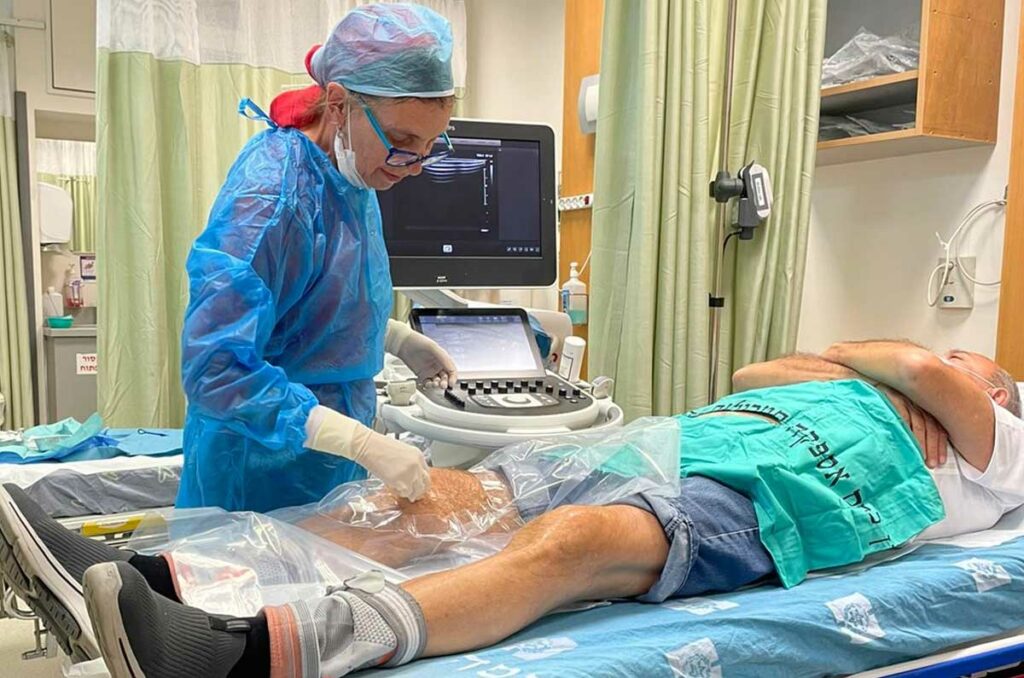The aim of epidural injections is to diminish the inflammation around a nerve root if such inflammation exists at all. Generally, these injections are effective in younger patients, usually under the age of 50, who suffer from pain radiating to the leg (or from the neck down the arm) that is present for less than 3 months. These injections are not effective for the treatment of localised spinal pain that does not radiate to the limb. It must be made clear, that if the structure pressing on the nerve root is a permanent, bony structure, such as a degenerative facet joint, one cannot expect a good long-term therapeutic result from these injections. But first of all, one must ascertain that the pain does arise from the nerve root and not from other structures. As explained in the chapter on ‘disc prolapses’, many patients’ disc prolapses are unrelated to their pain, even though they suffer from lumbar pain radiating to the leg. They often lack physical signs to support this diagnosis and it is recommended to search for other causes of radiating pain.
Most epidural injections performed are for the treatment of back pain referring to the leg. Usually, the injectate is comprised of steroids, local anaesthetic and normal saline, though there is much controversy about whether steroids are of any additional benefit. Most epidural injections are performed under fluoroscopy so that one can see exactly where the injected contrast material spreads to and confirm that the needle is in the correct position. The injections carry minimal risks of nerve damage, bleeding and infection though generally are safe procedures. Patients cannot take blood thinners (except for aspirin) or have an infectious disease when having an epidural injection.
Nerve root blocks in the neck
Because epidural space is so close to the spinal cord, epidural injections in the neck carry many more risks than those in the lower back. However, the good news is that there is a much safer and simpler alternative. Recently, several research papers have been published reporting the effectiveness of injection just over the cervical nerve root (a structure which lies 1-2cm under the skin) and far from the spinal cord. This injection must be performed under ultrasound guidance, and in contrast to injections done under fluoroscopy, one can see the nerve itself. One injects sterile water and a low concentration of dextrose. Patients have reported very good results lasting much longer than those who had epidural injections in the neck.







